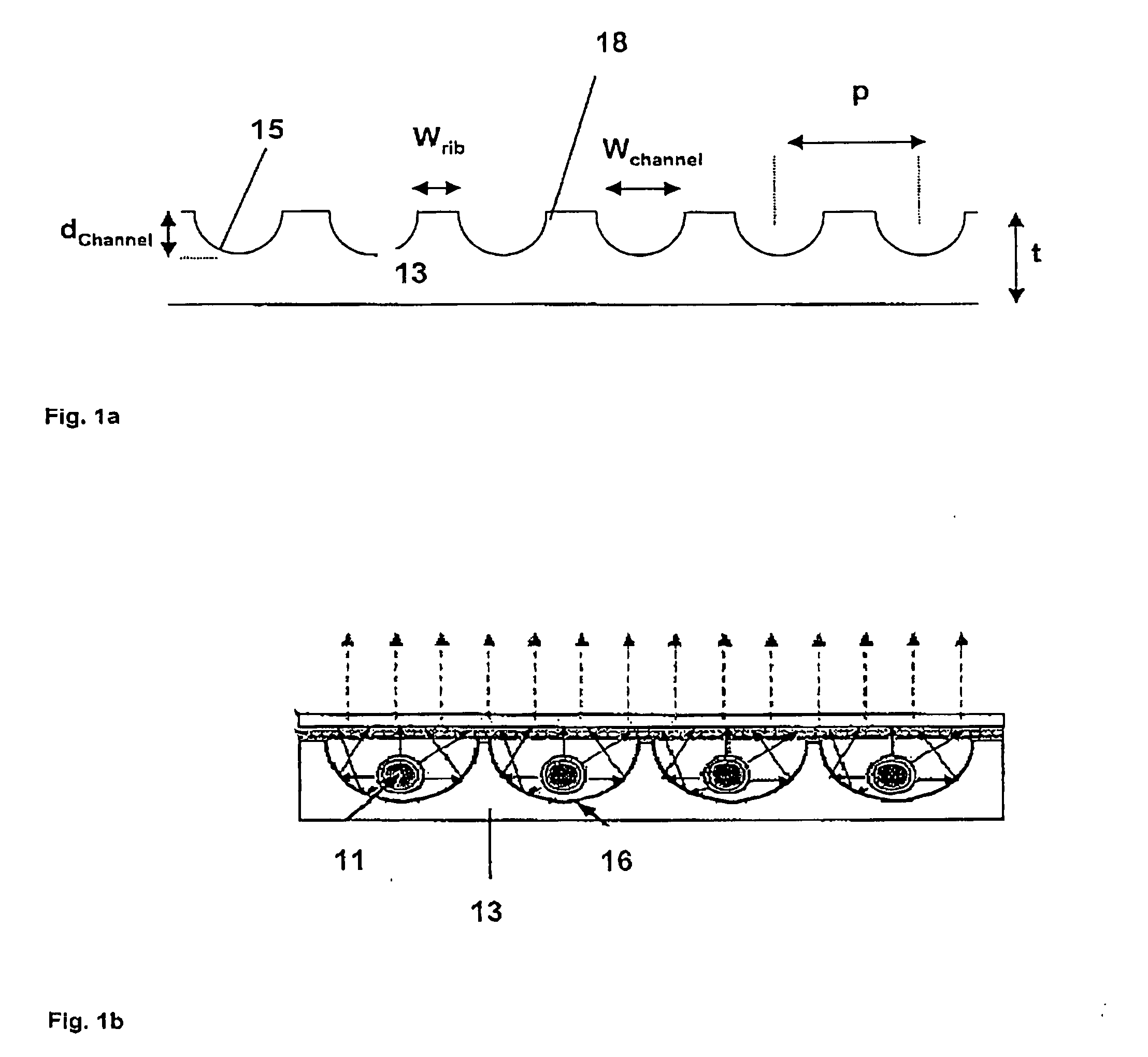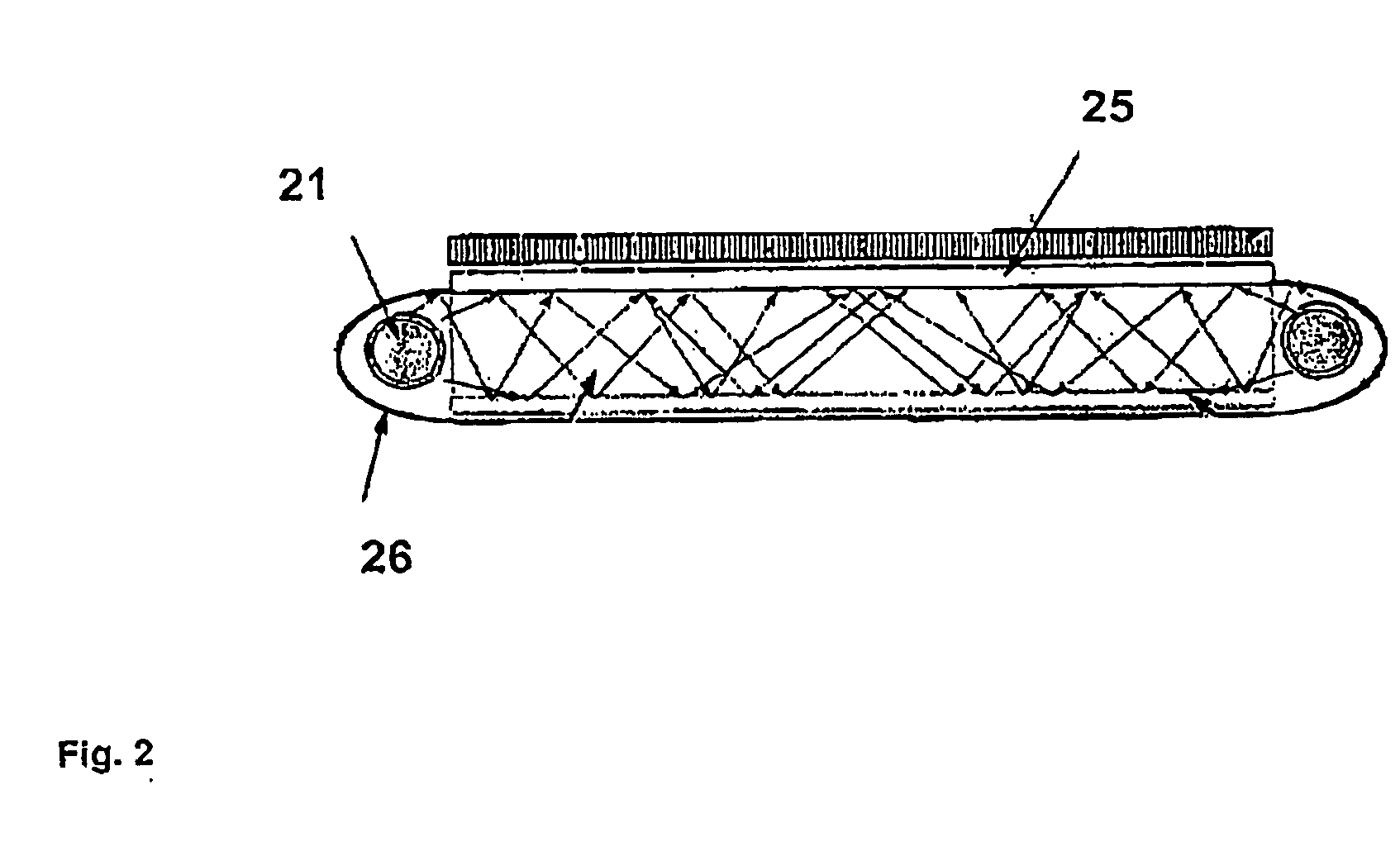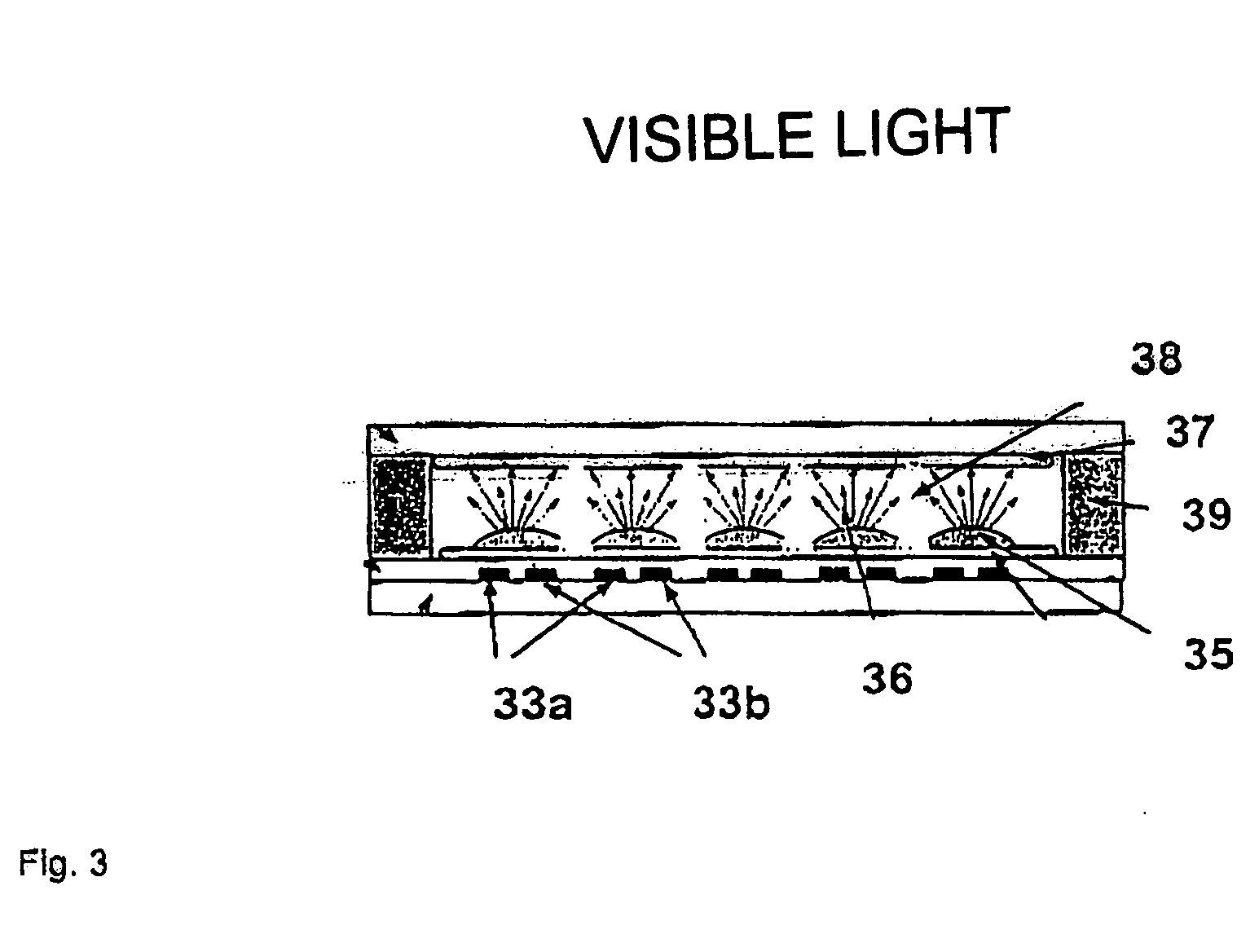UV-absorbing borosilicate glass for a gas discharge lamp, process for manufacturing same and gas discharge lamp made with same
a technology of borosilicate glass and gas discharge lamp, which is applied in the direction of discharge tube/lamp details, discharge tube luminescnet screen, gas-filled discharge tube, etc., can solve the problems of reducing the visible range of under 1000 nm, affecting and the mercury line at 313 nm is especially damaging, so as to reduce the visible range and improve the quality of the product. , the effect of high purity
- Summary
- Abstract
- Description
- Claims
- Application Information
AI Technical Summary
Benefits of technology
Problems solved by technology
Method used
Image
Examples
examples
[0059] The examples of the glasses according to the invention were prepared in the known manner and compared with known glasses of the prior art. The raw material was melted in a silica glass vessel and refined. The glass obtained in this manner was tested for its absorption and / or transmission.
[0060] The compositions of the individual glass embodiments or examples and their properties are tabulated in the following tables I and II. Table II shows the properties of the three glass compositions tabulated in Table I.
TABLE IGLASS COMPOSITIONS OF THE INVENTIONActual ingredientadded to the batch,Ingredientif differentExample 1Example 2Example 3SiO269.7568.0065.50B2O327.1027.1027.10Al2O30.700.701.00Li2O0.050.050.10Na2ONa2O3 / NaNO30.200.200.20K2OK2CO3 / KNO31.151.151.15MgOCaOSrOBaO0.750.750.75ZnOPbOTiO22.004.00ZrO2CeO2P2O5FClAs2O30.30.10.1Sb2O3Fe2O3Sum100.00100.00100.00
[0061]
TABLE IIPROPERTIES OF GLASS COMPOSITIONSACCORDING TO THE INVENTIONα (alpha)3.50 × 10−6 / KTg 415° C.T41260° C.T 281 nm...
PUM
| Property | Measurement | Unit |
|---|---|---|
| Fraction | aaaaa | aaaaa |
| Fraction | aaaaa | aaaaa |
| Percent by mass | aaaaa | aaaaa |
Abstract
Description
Claims
Application Information
 Login to View More
Login to View More - R&D
- Intellectual Property
- Life Sciences
- Materials
- Tech Scout
- Unparalleled Data Quality
- Higher Quality Content
- 60% Fewer Hallucinations
Browse by: Latest US Patents, China's latest patents, Technical Efficacy Thesaurus, Application Domain, Technology Topic, Popular Technical Reports.
© 2025 PatSnap. All rights reserved.Legal|Privacy policy|Modern Slavery Act Transparency Statement|Sitemap|About US| Contact US: help@patsnap.com



